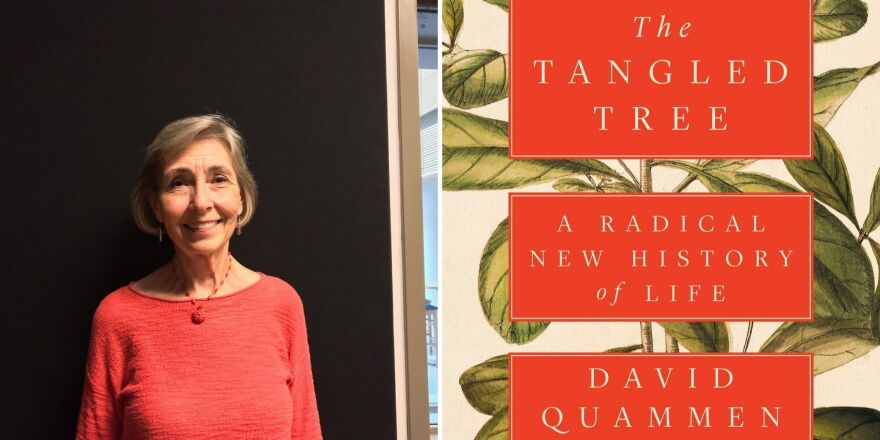“The Tangled Tree: A Radical New History of Life” offers those who usually read novels a chance to enjoy ‘creative non-fiction.’ This book is a well-told narrative about the molecular building blocks of life and how they evolved. David Quammen accepts the challenge of documenting the advancement of evolutionary life science while revealing its significance to all of our lives. Quammen also gives us insight into the vibrant communities of scientists carrying out similar work.
Quammen begins by introducing the image of the Tree of Life. He describes how it has evolved from the image of a ladder-to-heaven in ancient and medieval thinking into Darwin’s branching, upward-growing tree. Quammen closes his introduction with his own surprising proposition. He suggests Darwin’s tree image is no longer the precise metaphor for what life is. Quammen introduces each new evolutionary twist and turn until the new Tree of Life ends up looking more like a web than an upwardly-reaching tree with Humanity as its central aim.
Quammen reveals some limits in Darwin’s thinking by describing three recent discoveries that serve as the premise of the book.
First, the past 40 years of research suggest that Darwin’s Tree of Life image needs editing to include the existence of a form of cellular life beyond the known bacteria and non-bacteria, which are generally understood to depend on oxygen for survival. This third form is called Archaea, which thrive on hydrogen and carbon dioxide.
Second, scientists have begun to dispute other Darwinian concepts. One of these is vertical heredity, where genes flow vertically from parents to offspring. Additional studies have confirmed genes are also able hop horizontally across species boundaries. This suggests Darwin’s view of slow and gradual mutational change might not be as firm a biological principle as once thought.
Finally, in a third surprising revelation, current research points to Archaea as the universal ancestor of all life. Quammen’s newly-imagined ‘tree’ now shows the Archaea at its base, as the ancient first step toward life on Earth.
Quammen chisels the language of these hard-science concepts so they become accessible for all of us. And with his skillful storytelling, he weaves the ‘journey’ of the book around the brilliant, sometimes abrasive, and notably ill-fated scientist, Carl Woese. Quammen takes us inside of Woese’s laboratory and exposes us to the humanity of the many other scientists he researched and interviewed for this project. Most of us will understand the very human tendency of these scientists to belong to cliques and cling to points of view. And we may even be amused at how viciously some have sparred with each other over Naturalist and Creationist theories!
One thing I found particularly notable about Quammen’s work is that it represents his own ability to move across the boundaries of different disciplines. He shows us his undeniable commitment to solid science and to explaining it simply to those who are willing to listen.
Jeanne Huffman lives in New Millport. She’s a retired IT Project Manager, now teaching online classes at Delaware Valley University.






